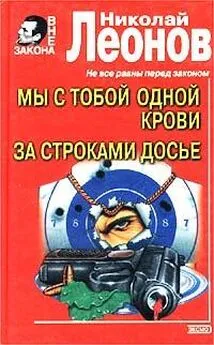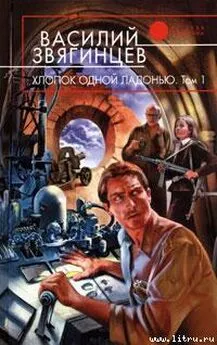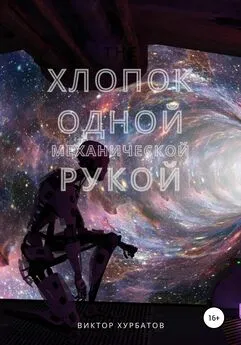Николай Кукушкин - Хлопок одной ладонью
- Название:Хлопок одной ладонью
- Автор:
- Жанр:
- Издательство:Альпина нон-фикшн
- Год:2020
- Город:Москва
- ISBN:978-5-0013-9315-3
- Рейтинг:
- Избранное:Добавить в избранное
-
Отзывы:
-
Ваша оценка:
Николай Кукушкин - Хлопок одной ладонью краткое содержание
Оказывается, в человеческом страдании виноваты динозавры, легкие существуют благодаря лишайникам, а главным событием в жизни наших предков за последний эон было превращение в червей. «Хлопок одной ладонью» – это история человека и его внутреннего мира, вмещающая в себя весь путь от неорганических молекул до возникновения языка и рассказанная так, будто это рыцарский роман или мифический эпос.
Хлопок одной ладонью - читать онлайн бесплатно ознакомительный отрывок
Интервал:
Закладка:
19. Harrison, C. J. & Morris, J. L. The origin and early evolution of vascular plant shoots and leaves. Philos Trans R Soc Lond B Biol Sci 373, doi:10.1098/rstb.2016.0496 (2018).
20. Beerling, D. J. Atmospheric carbon dioxide: a driver of photosynthetic eukaryote evolution for over a billion years? Philos Trans R Soc Lond B Biol Sci 367, 477–482, doi:10.1098/rstb.2011.0276 (2012).
21. Dorrell, R. G. & Smith, A. G. Do red and green make brown?: perspectives on plastid acquisitions within chromalveolates. Eukaryot Cell 10, 856–868, doi:10.1128/EC.00326–10 (2011).
22. Caldwell, J. P., Thorp, J. H. & Jervey, T. O. Predator-prey relationships among larval dragonflies, salamanders, and frogs. Oecologia 46, 285–289, doi:10.1007/BF00346253 (1980).
23. Rota-Stabelli, O., Daley, A. C. & Pisani, D. Molecular timetrees reveal a Cambrian colonization of land and a new scenario for ecdysozoan evolution. Curr Biol 23, 392–398, doi:10.1016/j.cub.2013.01.026 (2013).
24. Linares, A. M., Maciel-Júnior, J. A. H., Espírito Santo De Mello, H. & Sá Fortes Leite, F. First report on predation of adult anurans by Odonata larvae. Salamandra 52, 42–44 (2016).
25. McCormick, S. & Polis, G. A. Arthropods that prey on vertebrates. Biological Reviews 57, 29–58, doi:10.1111/j.1469-185X.1982.tb00363.x (1982).
26. Ridpath, M. G. Predation on frogs and small birds by Hierodula werneri (Giglio-Tos) (Mantidae) in tropical Australia.. Australian Journal of Entomology 16, 153–154, doi:10.1111/j.1440–6055.1977.tb00077.x (1977).
27. Molinari, J. et al. Predation by giant centipedes, Scolopendra gigantea, on three species of bats in a Venezuelan cave. Caribbean Journal of Science 41, 340–346 (2005).
28. Schmidt-Nielsen, K. & Randall, D. J. Animal Physiology: Adaptation and Environment (Cambridge University Press, 1997).
29. Telford, M. J., Bourlat, S. J., Economou, A., Papillon, D. & Rota-Stabelli, O. The evolution of the Ecdysozoa. Philos Trans R Soc Lond B Biol Sci 363, 1529–1537, doi:10.1098/rstb.2007.2243 (2008).
30. Verberk, W. C. & Bilton, D. T. Can oxygen set thermal limits in an insect and drive gigantism? PLoS One 6, e22610, doi:10.1371/journal.pone.0022610 (2011).
31. Clapham, M. E. & Karr, J. A. Environmental and biotic controls on the evolutionary history of insect body size. Proc Natl Acad Sci USA 109, 10927–10930, doi:10.1073/pnas.1204026109 (2012).
32. Pittman, R. N. in Regulation of Tissue Oxygenation Ch. 4 (Morgan & Claypool Life Sciences, 2011).
1. Alexander, R. M. Dinosaur biomechanics. Proc Biol Sci 273, 1849–1855, doi:10.1098/rspb.2006.3532 (2006).
2. Choo, B. Jurassic art: how our vision of dinosaurs has evolved over time , < https://theconversation.com/jurassic-art-how-our-vision-of-dinosaurs-has-evolved-over-time-42998> (2015).
3. Benton, M. J., Dhouailly, D., Jiang, B. & McNamara, M. The Early Origin of Feathers. Trends Ecol Evol 34, 856–869, doi:10.1016/j.tree.2019.04.018 (2019).
4. Quain, J. R. What Did T. Rex Look Like? A New Exhibit Has the 'Ultimate Predator' in Feathers , < https://gizmodo.com/what-did-t-rex-look-like-a-new-exhibit-has-the-ultima-1833164920> (2019).
5. Laurin, M. a. G., J. A. Diapsida. Lizards, Sphenodon, crocodylians, birds, and their extinct relatives , < http://tolweb.org/Diapsida> (2011).
6. Colbert, E. H. The Age of Reptiles (Dover Publications, 2012).
7. Carroll, R. L. The origin and early radiation of terrestrial vertebrates. Journal of Paleontology 75, 1202–1213, doi:10.1017/S0022336000017248 (2001).
8. Peyser, C. E. & Poulsen, C. J. Controls on Permo-Carboniferous precipitation over tropical Pangaea: A GCM sensitivity study. Palaeogeography, Palaeoclimatology, Palaeoecology 268, 181–192, doi: https://doi.org/10.1016/j.palaeo.2008.03.048(2008).
9. Dunne, E. M. et al. Diversity change during the rise of tetrapods and the impact of the 'Carboniferous rainforest collapse'. Proc Biol Sci 285, doi:10.1098/rspb.2017.2730 (2018).
10. Rubidge, B. S. & Sidor, C. A. Evolutionary Patterns among Permo-Triassic Therapsids. Annual Review of Ecology and Systematics 32, 449–480 (2001).
11. DeMar, R. & Barghusen, H. R. Mechanis and the Evolution of the Synapsid Jaw. Evolution 26, 622–637, doi:10.2307/2407058 (1972).
12. Van Valkenburgh, B. & Jenkins, I. Evolutionary Patterns in the History of Permo-Triassic and Cenozoic Synapsid Predators. The Paleontological Society Papers 8, 267–288, doi:10.1017/S1089332600001121 (2002).
13. Sumida, S. & Martin, K. L. M. Amniote Origins: Completing the Transition to Land (Elsevier Science, 1997).
14. Espinoza, R. E., Wiens, J. J. & Tracy, C. R. Recurrent evolution of herbivory in small, cold-climate lizards: breaking the ecophysiological rules of reptilian herbivory. Proc Natl Acad Sci USA 101, 16819–16824, doi:10.1073/pnas.0401226101 (2004).
15. Sjostrom, E. Wood Chemistry: Fundamentals and Applications (Elsevier Science, 1993).
16. Smant, G. et al. Endogenous cellulases in animals: isolation of beta-1, 4-endoglucanase genes from two species of plant-parasitic cyst nematodes. Proc Natl Acad Sci USA 95, 4906–4911, doi:10.1073/pnas.95.9.4906 (1998).
17. Watanabe, H. & Tokuda, G. Animal cellulases. Cell Mol Life Sci 58, 1167–1178, doi:10.1007/PL00000931 (2001).
18. Lo, N., Watanabe, H. & Sugimura, M. Evidence for the presence of a cellulase gene in the last common ancestor of bilaterian animals. Proc Biol Sci 270 Suppl 1, S69–72, doi:10.1098/rsbl.2003.0016 (2003).
19. Kamo, S. L. et al. Rapid eruption of Siberian flood-volcanic rocks and evidence for coincidence with the Permian – Triassic boundary and mass extinction at 251 Ma. Earth and Planetary Science Letters 214, 75–91, doi: https://doi.org/10.1016/S0012-821X (03) 00347–9(2003).
20. Renne, P. R. & Basu, A. R. Rapid eruption of the siberian traps flood basalts at the permo-triassic boundary. Science 253, 176–179, doi:10.1126/science.253.5016.176 (1991).
21. Shen, S. Z. et al. Calibrating the end-Permian mass extinction. Science 334, 1367–1372, doi:10.1126/science.1213454 (2011).
22. Clarkson, M. O. et al. Ocean acidification and the Permo-Triassic mass extinction. Science 348, 229–232, doi:10.1126/science.aaa0193 (2015).
23. Erwin, D. H. The Permo – Triassic extinction. Nature 367, 231–236, doi:10.1038/367231a0 (1994).
24. Rothman, D. H. et al. Methanogenic burst in the end-Permian carbon cycle. Proc Natl Acad Sci USA 111, 5462–5467, doi:10.1073/pnas.1318106111 (2014).
25. Basu, A. R., Petaev, M. I., Poreda, R. J., Jacobsen, S. B. & Becker, L. Chondritic meteorite fragments associated with the Permian-Triassic boundary in Antarctica. Science 302, 1388–1392, doi:10.1126/science.1090852 (2003).
26. Becker, L. et al. Bedout: a possible end-Permian impact crater offshore of northwestern Australia. Science 304, 1469–1476, doi:10.1126/science.1093925 (2004).
27. Berner, R. A. The carbon and sulfur cycles and atmospheric oxygen from middle Permian to middle Triassic. Geochimica et Cosmochimica Acta 69, 3211–3217, doi: https://doi.org/10.1016/j.gca.2005.03.021(2005).
28. Floudas, D. et al. The Paleozoic origin of enzymatic lignin decomposition reconstructed from 31 fungal genomes. Science 336, 1715–1719, doi:10.1126/science.1221748 (2012).
29. Gurewitsch, M. True Colors , < https://www.smithsonianmag.com/arts-culture/true-colors-17888/> (2008).
30. Talabot, M. The Myth of Whiteness in Classical Sculpture. The New Yorker (2018).
31. Conway, J., Kosemen, C. M., Naish, D. & Hartman, S. All Yesterdays: Unique and Speculative Views of Dinosaurs and Other Prehistoric Animals (Irregular Books, 2013).
32. Willerslev, E. et al. Long-term persistence of bacterial DNA. Curr Biol 14, R9–10, doi:10.1016/j.cub.2003.12.012 (2004).
33. Shapiro, B. Mammoth 2.0: will genome engineering resurrect extinct species? Genome Biol 16, 228, doi:10.1186/s13059-015-0800-4 (2015).
34. Black, R. You say «Velociraptor,» I say «Deinonychus» , < https://www.smithsonianmag.com/science-nature/you-say-velociraptor-i-say-deinonychus-33789870/> (2008).
35. Vinther, J. The True Colors of Dinosaurs. Sci Am 316, 50–57, doi:10.1038/scientificamerican0317–50 (2017).
36. Brett-Surman, M. K., Holtz, T. R. & Farlow, J. O. The Complete Dinosaur (Indiana University Press, 2012).
37. Amiot, R. et al. Oxygen isotopes from biogenic apatites suggest widespread endothermy in Cretaceous dinosaurs. Earth and Planetary Science Letters 246, 41–54, doi: https://doi.org/10.1016/j.epsl.2006.04.018(2006).
38. Varricchio, D. J. et al. Avian paternal care had dinosaur origin. Science 322, 1826–1828, doi:10.1126/science.1163245 (2008).
39. Meng, Q., Liu, J., Varricchio, D. J., Huang, T. & Gao, C. Palaeontology: parental care in an ornithischian dinosaur. Nature 431, 145–146, doi:10.1038/431145a (2004).
40. Hearn, L. & Williams, A. C. C. Pain in dinosaurs: what is the evidence? Philos Trans R Soc Lond B Biol Sci 374, 20190370, doi:10.1098/rstb.2019.0370 (2019).
41. Horner, J. R. The Nesting Behavior of Dinosaurs. Scientific American 250, 130–137 (1984).
42. Riede, T., Eliason, C. M., Miller, E. H., Goller, F. & Clarke, J. A. Coos, booms, and hoots: The evolution of closed-mouth vocal behavior in birds. Evolution 70, 1734–1746, doi:10.1111/evo.12988 (2016).
43. Xu, X., Zhou, Z. & Wang, X. The smallest known non-avian theropod dinosaur. Nature 408, 705–708, doi:10.1038/35047056 (2000).
44. Pan, Y. et al. The molecular evolution of feathers with direct evidence from fossils. Proc Natl Acad Sci USA 116, 3018–3023, doi:10.1073/pnas.1815703116 (2019).
45. Lautenschlager, S., Witmer, L. M., Altangerel, P. & Rayfield, E. J. Edentulism, beaks, and biomechanical innovations in the evolution of theropod dinosaurs. Proc Natl Acad Sci USA 110, 20657–20662, doi:10.1073/pnas.1310711110 (2013).
46. Ostrom, J. H. Archaeopteryx and the origin of birds. Biological Journal of the Linnean Society 8, 91–182, doi:10.1111/j.1095–8312.1976.tb00244.x (2008).
47. Bar-On, Y. M., Phillips, R. & Milo, R. The biomass distribution on Earth. Proc Natl Acad Sci USA 115, 6506–6511, doi:10.1073/pnas.1711842115 (2018).
48. Newitz, A. Lystrosaurus: The Most Humble Badass of the Triassic , < https://www.nationalgeographic.com/science/phenomena/2013/05/28/lystrosaurus-the-most-humble-badass-of-the-triassic/> (2013).
49. Botha, J. & Smith, R. M. H. Lystrosaurus species composition across the Permo-Triassic boundary in the Karoo Basin of South Africa. Lethaia 40, 125–137, doi:10.1111/j.1502–3931.2007.00011.x (2007).
50. Botha-Brink, J. Burrowing in Lystrosaurus: preadaptation to a postextinction environment? Journal of Vertebrate Paleontology 37, e1365080, doi:10.1080/02724634.2017.1365080 (2017).
51. Botha-Brink, J., Codron, D., Huttenlocker, A. K., Angielczyk, K. D. & Ruta, M. Breeding Young as a Survival Strategy during Earth's Greatest Mass Extinction. Sci Rep 6, 24053, doi:10.1038/srep24053 (2016).
Читать дальшеИнтервал:
Закладка:
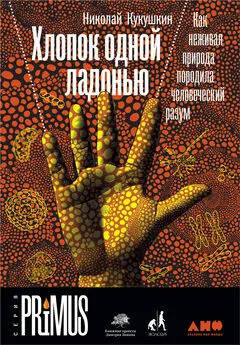

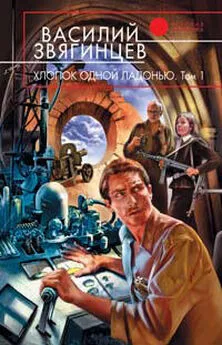
![Василий Звягинцев - Хлопок одной ладонью. Том 1. Игра на железной флейте без дырочек [OCR]](/books/213154/vasilij-zvyagincev-hlopok-odnoj-ladonyu-tom-1-igr.webp)
![Василий Звягинцев - Хлопок одной ладонью. Том 2. Битва при Рагнаради [OCR]](/books/213155/vasilij-zvyagincev-hlopok-odnoj-ladonyu-tom-2-bit.webp)
